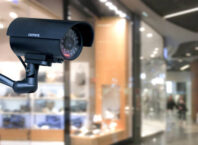In the fast-paced world of business, first impressions are everything. Your attire can be a powerful tool in conveying professionalism, confidence, and competence. Whether you’re a seasoned professional or just starting your career, understanding the nuances of business attire is crucial. In this comprehensive guide, we’ll delve into the world of business attire, explore different types of attire, and provide valuable tips to help you dress for success.
What Is Business Attire?
Business attire is a dress code that conveys a polished and professional appearance suitable for the workplace. The appropriate dress code can vary significantly depending on the industry, company culture, and the nature of your role. Let’s explore the main types of business attire.
1. Casual Attire
Casual attire, often viewed as the most relaxed category in business attire, has evolved significantly in recent years. While it may grant you more freedom in your clothing choices, there are still guidelines to follow.
In a casual work setting, you’ll find that jeans and t-shirts are generally acceptable. However, it’s vital to steer clear of overly casual or distressed clothing. Torn or overly faded jeans and graphic t-shirts are typically considered inappropriate for the workplace. Instead, opt for well-maintained, well-fitting jeans and casual tops that aren’t overly revealing or unconventional.
The key to mastering casual attire is to strike a balance between comfort and professionalism. Casual doesn’t mean sloppy; it means relaxed yet put-together. Footwear, for example, should be clean and in good condition. Sneakers, when chosen wisely, can be a viable option.
Casual attire is often seen in creative and tech industries, where a more laid-back atmosphere prevails. Nevertheless, even in these settings, it’s important to remember that your clothing should still convey respect for your role and colleagues.
2. Smart Casual Attire
Smart casual attire occupies the middle ground between the comfort of casual wear and the professionalism of business attire. It’s a versatile dress code that allows you to showcase your style while maintaining a level of sophistication.
When adhering to a smart casual dress code, think of items like khakis, well-fitted jeans, and collared shirts. You might pair these with blazers, vests, or stylish accessories to elevate your look. Smart casual attire embraces individuality and creativity, so feel free to experiment with colors and patterns while ensuring that your ensemble remains tasteful.
Footwear is another important consideration in smart casual attire. Loafers, derbies, or even clean, fashion-forward sneakers can complement your outfit well. Remember that, despite the more relaxed appearance, your clothes should always be clean, ironed, and well-maintained.
The smart casual dress code is prevalent in workplaces that seek to balance professionalism with a more relaxed environment. It’s suitable for industries like marketing, design, and some elements of the fashion industry, where creativity and innovation are highly valued.
3. Business Casual Attire
Business casual attire is a step up from smart casual and indicates a slightly higher level of formality. While still comfortable, it typically includes dress slacks, blouses, collared shirts, and blazers. The key to mastering business casual is to blend sophistication with a touch of personal style.
In a business casual setting, you have more freedom to express your individuality. This dress code often allows for a broader range of colors and patterns, although it’s still wise to exercise restraint and avoid going overboard. Your clothing should be well-tailored, conveying an image of professionalism without being overly formal.
Footwear is an essential part of the business casual look. Oxfords, loafers, or classic pumps can complete your outfit. Ensure your shoes are polished and in good condition. Accessories like belts and ties, while optional, can add a refined touch to your attire.
Business casual attire is commonly seen in corporate offices, particularly on days when a strict business professional dress code isn’t required. It offers a more relaxed and approachable appearance while maintaining an air of competence. It’s ideal for professionals working in finance, law, or consulting, where client interactions are frequent, and a polished image is crucial.
4. Business Professional Attire
Business professional attire represents the classic corporate look that exudes a serious, competent, and polished appearance. When you envision the quintessential professional, you’re likely thinking of someone dressed in business professional attire.
At the heart of business professional attire are tailored suits. For men, this means a well-fitted suit with a dress shirt and tie, while women can choose between skirt suits or pantsuits, typically paired with blouses or tops. The colors in business professional attire are often conservative and muted, like navy, charcoal, and black, conveying a sense of authority and dependability.
Shoes should be closed-toe and in a formal style. For men, this means oxfords or derbies, and for women, classic pumps are a solid choice. Accessories in business professional attire tend to be minimal and conservative. Ties, belts, and watches should be understated, enhancing the overall look without drawing excessive attention.
Business professional attire is the go-to choice for high-stakes meetings, boardroom presentations, and any situation where you need to project a commanding and reliable image. This dress code is predominant in industries such as finance, law, and government, where formality and professionalism are paramount.
5. Business Formal Attire
Business formal attire represents the epitome of professional dress, reserved for the most prestigious and formal occasions. It’s the dress code of choice for events like black-tie galas, award ceremonies, and high-level corporate functions.
Business formal attire is marked by dark, finely tailored suits for men, typically in black or dark navy, paired with a white dress shirt and a conservative tie. Women often opt for elegant, full-length formal gowns or tailored pantsuits, sometimes with added accessories like statement jewelry or evening clutches.
Shoes in business formal attire should be highly polished and exude a sense of luxury. For men, black patent leather oxfords are the classic choice, while women may opt for closed-toe pumps with a sophisticated design.
Accessories in business formal attire can be more elaborate, but they should still maintain an air of sophistication and restraint. Cufflinks, pocket squares, and fine jewelry can be tastefully added to complete the look.
Business formal attire is primarily reserved for black-tie events, corporate galas, and prestigious award ceremonies. It signifies a commitment to formality and elegance, and it’s essential for individuals in senior executive positions and those representing their organizations at high-profile events.
6. Gender-Neutral Professional Dress
As workplaces evolve, so do our perceptions of attire and identity. Gender-neutral professional dress is an inclusive and contemporary approach to business attire. It’s a response to the need for individuals to express their personal style and identity while adhering to the core principles of professionalism and respect.
In gender-neutral professional dress, the emphasis is on inclusivity. It encourages individuals to wear clothing that aligns with their gender identity without feeling pressured to conform to traditional gender-based dress codes. This approach recognizes that professional attire should not be limited by binary gender norms.
The key to mastering gender-neutral professional dress is to focus on individual expression while maintaining the overall look’s professionalism. Employers are increasingly recognizing the importance of diversity and inclusion in the workplace, and this extends to the dress code.
In such an environment, employees have the freedom to select attire that aligns with their identity, whether it be skirts or pants, dresses or suits. The focus is on expressing oneself in a way that is respectful of the workplace culture and conducive to productive and harmonious work relationships.
Gender-neutral professional dress is gaining traction in forward-thinking organizations that value diversity and are dedicated to creating inclusive work environments. It demonstrates an organization’s commitment to allowing employees to be their authentic selves while thriving in their careers.
Business Attire Tips
Now that we’ve explored the different types of business attire, here are some essential tips to help you navigate the world of work clothes.
Determining the Dress Code
1. Know Your Industry: Different industries may have distinct dress codes. For instance, finance and law tend to lean towards more formal attire, while tech companies might embrace a more relaxed look. Research what’s appropriate for your field.
2. Observe Colleagues: Pay attention to what your colleagues, especially those in senior positions, are wearing. They can provide valuable insights into the company’s culture and expectations. If in doubt, it’s often safer to slightly overdress rather than underdress.
3. Company Culture: Understand your company’s specific culture. Some organizations encourage creativity and personal expression through attire, while others expect a more conservative appearance. Adapt your clothing choices to fit within your company’s culture.
How Has Business Attire Changed?
The world of business attire has undergone significant transformation in recent decades. While traditional business professional attire was once the norm in most workplaces, the rules have become more flexible. These changes are driven by several factors.
One major influence has been the rise of technology and the digital age. With remote work and telecommuting becoming more prevalent, the need for overly formal attire has diminished. Casual and smart casual attire have found their place in the modern work landscape, enabling individuals to balance comfort with professionalism.
Moreover, as society’s perspectives on gender and identity evolve, the strict gender-based dress codes have given way to more inclusive approaches. The emergence of gender-neutral professional dress underscores the importance of respecting individual identity in the workplace.
In addition, younger generations entering the workforce have embraced the idea that professional attire can be more expressive and individualistic. They have pushed for a shift away from rigid dress codes towards a more flexible and inclusive approach.
Dressing for Work: Dos and Don’ts
Dos:
1. Invest in Quality: High-quality clothing not only looks better but also lasts longer. Investing in well-made, durable pieces ensures you won’t have to constantly replace your work wardrobe.
2. Tailor Your Outfits: Well-fitted clothes can make a significant difference in your overall appearance. Tailoring your garments ensures they fit you perfectly, making you look more put-together and professional.
3. Accessorize Thoughtfully: Accessories can elevate your outfit. Choose items that enhance your look without being overly flashy. For men, a classic watch and a quality leather belt can add sophistication. For women, tasteful jewelry and scarves can complement your attire.
Don’ts:
1. Overdress or Underdress: The key is to always aim for the right level of formality based on your workplace. Overdressing can make you feel uncomfortable and out of place while underdressing can damage your professional image.
2. Revealing Clothing: Avoid outfits that are too revealing or flashy. In professional settings, it’s essential to maintain a level of modesty and respect for yourself and your colleagues. Avoid low-cut tops, very short skirts, or overly tight clothing.
3. Neglect Personal Grooming: Personal grooming is an integral part of business attire. This includes proper hygiene, well-groomed hair, and well-maintained nails. Your overall presentation should be clean and professional.
In conclusion, business attire is a multifaceted topic that transcends clothing to convey professionalism and respect in the workplace. By understanding the various types of business attire and following these tips, you’ll be well-prepared to dress for success in your career. Whether you’re striving for a casual, smart casual, or formal look, the right attire will help you make a lasting impression and convey the confidence and competence that define business professionals.
Frequently Asked Questions:
1. What is the difference between business casual and business professional attire?
– Answer: Business casual attire is less formal and allows for greater individual style expression with items like collared shirts and blazers. Business professional attire, on the other hand, is the classic corporate look, often involving tailored suits and a more formal appearance.
2. Can I wear the gender-neutral professional dress in any industry?
– Answer: While gender-neutral professional dress is becoming more accepted, its level of acceptance can vary by industry. Some industries, like tech and creative fields, are more open to diverse attire, while others, such as finance and law, may still lean towards traditional dress codes.
3. Are jeans ever appropriate in business attire?
– Answer: Yes, jeans can be appropriate in some business settings, particularly in a casual or smart casual environment. However, they should be well-fitted and in good condition, with no excessive distress or holes.
4. How has business attire evolved in the digital age?
– Answer: The digital age has brought more flexibility to business attire. With remote work and telecommuting, there’s a reduced need for strict formal attire. Casual and smart casual attire has gained prominence, providing comfort and professionalism.
5. Can I wear a gender-neutral dress code in a traditional workplace?
– Answer: It depends on the company’s culture. Traditional workplaces may have stricter dress codes, but some are evolving to embrace gender-neutral attire. Observing your colleagues and the company’s policies is key to making an informed choice.

















































































